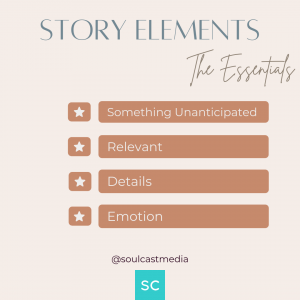How To Pitch Your Story To Broadcast Media
Getting covered by TV news requires more than just a good story. It also requires really good attention-grabbing visuals. This is what makes pitching to a newspaper or magazine a little different from television. It is still important to pitch a high-quality, value-add story – but visuals will set you apart.
Television is a visual medium. The industry relies on action shots to tell stories.
If you have a compelling visual to go along with your story, you are already at a huge advantage.
Stories that Stand Out
For nearly ten years, I was a broadcast television journalist. The pitches that would catch my eye were the ones that I could visualize in my head how it would look.
There are two important things to consider when pitching your story to broadcast media. The first is making sure that your story is interesting and compelling to the news media’s audience. And the second is making sure the story is visually relatable.
1. Interesting + Compelling
Your story must be interesting and compelling. You have to show the elements involved that will bring your story to life.
Consider these 4 elements when pitching your story
- Something unanticipated – The person you are pitching to sees hundreds of pitches. Most of them are probably the same types of stories. If you are able to bring in your story from a unique angle, that will catch their attention. Bringing a story that has an unanticipated angle or twist will make your story more interesting and compelling.
- Relevant – Reporters are always looking for relevant content. This can be timely content such as those that go with certain weather seasons. This can also mean something relevant going on locally such as a new industry bringing in tons of jobs. If your story is relevant or timely, it will be much more interesting.
- Details – Don’t be vague. When pitching your story you must outline all of the elements that will make it exciting. Give details that help the reporter visualize the story.
- Emotion – Does your story evoke emotion? If you are able to connect your story to emotion, it will be much more compelling to the audience.
 Many reporters are wary of pitches that simply benefit you or your company. They need stories that are compelling for the viewer. Remember, news reporters need content that is a value add to their company as well.
Many reporters are wary of pitches that simply benefit you or your company. They need stories that are compelling for the viewer. Remember, news reporters need content that is a value add to their company as well.
For example, if you are pitching a story about your innovative new technology, you have to show why this technology is exciting to their audience.
Ask yourself the following:
- Why does their audience care?
- What benefits does it bring their audience?
- How can I showcase my technology and give it a relatable spin?
- Am I telling a story or am I sending a press release?
You want to be self-aware and make sure that you are telling a story and not just sending a fact sheet. Fact sheets are boring to a viewer and won’t be compelling enough to get on the news.
Of course, making sure your story is visually relatable will help you get your story seen and heard!
2. Visually Relateable
Broadcast media is all about visuals. There is a saying that when you are watching a movie or television show, you should be able to feel the emotions without having the volume on. The same is true for broadcast media. You should be able to tell your story with visuals only. Words are used simply to tie things together.

What makes a story visually relatable?
- Tension – a relatable visual that has an element of tension will be very compelling. For example, when a news program shows a sports team in the final seconds of the game but doesn’t show how it ended. That’s building tension. You want to keep watching to see how it ends. If your story has an element of tension where you can show how something is about to happen or makes the viewer wonder, what’s next?
- Entertaining – Are your visuals entertaining? Will people laugh? Will they get excited about what they are seeing? Entertaining visuals are a great addition to your story.
- Education – Are you providing important information? Perhaps you have graphics that are resources people can use. These are great additions to your overall story and will make it more visually relatable.
- Call To Action – Do your visuals tell the viewer what they need to do next? Viewers want to know what to do with your story. And news reporters love a good call to action.
For example – if you are pitching a health story about a new procedure – that in and of itself isn’t compelling. Yes, it may be life-saving and revolutionary, but what else?
To make it TV newsworthy – suggest that the cameras go into the operating room and get shots of the procedure actually happening. (With patient consent of course!) You can elevate the story by having the patient get interviewed explaining how life-changing this procedure was. Now this story is about more than just a medical procedure. Viewers can see and hear from the person benefiting from it. This makes the whole segment a lot more well-rounded.
Now of course securing these action shots and the person to be interviewed will take more leg-work. But if these two things are lined up the chances of securing a TV news story go up dramatically.
Remember, the key to a compelling television pitch is telling the story through the people and visuals to help bring it all to life.
__
Whenever you’re ready, there are 3 ways we can help you:
- Discover your communications style so you know where to start. Over 4,000 people have found theirs here.
- Attend our monthly communication workshop to build communications confidence (new topics: public speaking, advocating for yourself, building credibility, etc) here.
- Get your brand in front of 43k+ people by sponsoring our newsletter or Soulcast Media | LIVE LinkedIn events [contact: hello@soulcastmedia.com]











